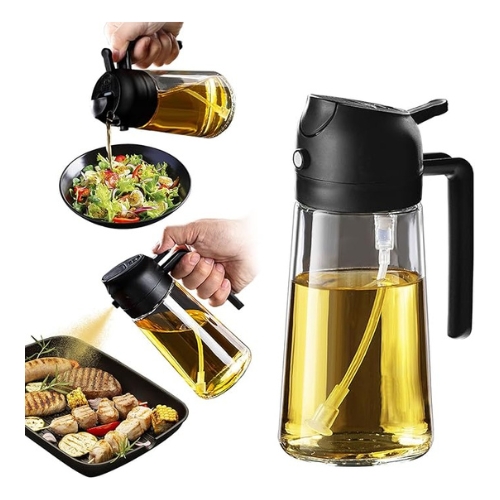There’s something undeniably nostalgic about a crisp, garlicky dill pickle—especially when it’s the real deal. We’re talking old-school, barrel-style, naturally fermented kosher dills. These beauties are tangy, snappy, and packed with bold, briny flavor. And trust me, once you taste a homemade fermented pickle, those store-bought jars just won’t cut it anymore.
Why You’ll Love Traditional Kosher Dill Pickles
This recipe isn’t just about the ingredients—it’s about creating moments. Whether you’re whipping up a batch for burger night, prepping for a picnic, or just indulging in a salty-crunchy snack attack, these pickles are here to elevate the moment.
Versatile: Perfect as a sidekick to sandwiches, chopped into salads, or just straight out of the jar. These pickles go with everything.
Budget-Friendly: Cucumbers, garlic, water, and salt—seriously, that’s most of it. You don’t need to spend big to taste big.
Quick and Easy: The active prep time is minimal. You’ll spend more time trying not to eat them all on day two than you will making them.
Customizable: Want more garlic? Toss in extra cloves. Like it spicy? A little more red pepper does the trick. You can tweak the flavors to match your pickle personality.
Crowd-Pleasing: These are the kind of pickles that make people say, “Wait—you made these?” Yes. Yes, you did.
Ingredients in Traditional Kosher Dill Pickles
Here’s the beauty of it—just a few humble ingredients come together to create that mouthwatering, tangy crunch we all love.
Small Cucumbers: Kirby or pickling cucumbers are ideal here. They’re firm, snappy, and soak up all the goodness like champs.
Garlic Cloves: Smashed and bold, garlic brings that unmistakable depth and punchy aroma to your pickles.
Fresh Dill Heads or Sprigs: The soul of a dill pickle. Fresh dill adds that signature herbaceous note we all crave.
Whole Black Peppercorns: These add a little subtle spice and round out the flavor.
Mustard Seeds (Optional): For an earthy, slightly tangy background note that deepens the brine.
Red Pepper Flakes (Optional): Just a hint of heat to wake up your taste buds—totally up to you.
Kosher Salt (Non-Iodized): This is your fermenting powerhouse. It draws moisture from the cucumbers and helps good bacteria thrive.
Filtered or Dechlorinated Water: Chlorine can mess with fermentation, so filtered is best.
Grape Leaf or Bay Leaf (Optional): A nifty little trick—these leaves help keep your pickles crunchy during the fermenting process.

Disclosure: This post contains affiliate links.If you click and make a purchase, I may earn a small commission at no extra cost to you.
Instructions
Let’s dive into the steps to create this flavorful masterpiece:
Make the Brine
Dissolve the kosher salt completely into the water. Give it a good stir and set aside. You’re creating the perfect environment for fermentation here, so make sure the salt is fully incorporated.
Prep the Cucumbers
Wash them thoroughly and trim just the blossom end (it’s the opposite side of the stem). This little move helps prevent mushiness and keeps them delightfully crisp.
Pack the Jar
Start with the flavor base: garlic, dill, peppercorns, and any optional spices go in first. Then tightly pack in your cucumbers. You can stack them vertically or snugly however they fit—it’s pickle Tetris.
Add the Brine
Pour the prepared brine over the cucumbers, completely submerging them. Use a fermentation weight or a small, clean jar to keep everything beneath the surface.
Cover and Wait
Top the jar loosely with a lid or a cloth secured with a rubber band. This lets those natural fermentation gases escape while keeping things clean.
Fermentation
Place the jar in a cool, dark-ish spot—ideally somewhere between 65–75°F. Let them ferment for 4 to 7 days.
Start tasting around day 3 or 4. Once they hit that perfect tangy-salty-sour spot, pop them in the fridge to slow the ferment. They’ll keep getting better as they sit.
Nutrition Facts
Servings: About 12–15 pickles
Calories per serving: Roughly 5–10 (mostly from the cucumbers!)
Preparation Time
Prep Time: 15 minutes
Fermentation Time: 4 to 7 days
Total Time: 4 to 7 days (mostly hands-off)
How to Serve Traditional Kosher Dill Pickles
With Sandwiches: The classic combo—next to pastrami, grilled cheese, or even a PB&J for a little salty-sweet contrast.
On a Charcuterie Board: Add a briny bite to your meats and cheeses. It’s all about balance, baby.
Chopped into Salads: Dice ’em up and toss them into potato salad, tuna salad, or a simple garden mix.
As a Snack: Cold straight from the fridge. Crunchy, zippy, and totally addictive.
In Bloody Marys: Yep. Pickles as garnish? Game changer.
Additional Tips
Go for Crunch: Add a grape or bay leaf to help keep the cucumbers firm.
No Mold, No Worries: Foam or cloudiness is normal. If there’s mold and it’s fuzzy or smells weird, toss it. If not, you’re golden.
Make It Yours: Add in coriander, cloves, or even sliced jalapeños for fun flavor twists.
Keep Them Cool: Once they’re where you like them flavor-wise, refrigerate to keep them from getting too sour.
Batch it Up: You can easily double or triple the recipe—just keep the salt-to-water ratio consistent.
FAQ Section
Q1: Can I use regular table salt instead of kosher salt?
A1: It’s best to stick with kosher or non-iodized salt. Iodine can inhibit fermentation and give your pickles a strange taste.
Q2: Can I ferment pickles in a plastic container?
A2: It’s not recommended. Stick to glass jars or ceramic crocks for best results and no funky chemical flavors.
Q3: My brine looks cloudy—is that okay?
A3: Totally normal! That’s just the lactic acid bacteria doing their job.
Q4: How long do these pickles last in the fridge?
A4: Several months! As long as they’re submerged and smell good, you’re good.
Q5: Can I use sliced cucumbers?
A5: You can, but they may ferment faster and won’t stay as crunchy. Whole or halved cucumbers work best for that signature snap.
Q6: What if my pickles are too salty?
A6: Next time, you can experiment with slightly less salt—but don’t go too low or the fermentation won’t happen properly.
Traditional Kosher Dill Pickles
- Total Time: 10 minutes (plus 4–7 days fermentation)
- Yield: Approximately 1 quart
- Diet: Gluten Free
Description
Crunchy, tangy, and packed with probiotic goodness, these traditional kosher dill pickles are a game-changer for any pickle enthusiast. Made through natural fermentation, they offer a delightful balance of flavors that elevate any meal or snack. Perfect for sandwiches, burgers, or enjoying straight from the jar!
Ingredients
-
Small cucumbers (Kirby or pickling cucumbers work best)
-
Garlic cloves, smashed
-
Fresh dill heads or sprigs
-
Whole black peppercorns
-
Mustard seeds (optional)
-
Red pepper flakes (optional, for a little heat)
-
Kosher salt (non-iodized)
-
Filtered or dechlorinated water
-
Grape leaf or bay leaf (optional – helps keep pickles crunchy)
-
Wide-mouth jar (1 quart or larger, depending on batch size)
Instructions
-
Prepare the Brine:
Dissolve the kosher salt in the filtered water, stirring until completely dissolved. Set aside. -
Prepare the Cucumbers:
Wash the cucumbers thoroughly. Trim just the blossom end to prevent soft pickles. -
Pack the Jar:
Place the smashed garlic, fresh dill, peppercorns, and any optional spices at the bottom of the jar. -
Add Cucumbers:
Pack the cucumbers tightly into the jar, arranging them vertically or as they fit best. -
Add Brine:
Pour the prepared brine over the cucumbers until they are completely submerged. -
Weigh Down:
Use a fermentation weight or a small jar to keep the cucumbers submerged under the brine. -
Cover:
Loosely cover the jar with a lid or a cloth secured with a rubber band to allow gases to escape during fermentation. -
Ferment:
Leave the jar at room temperature (65–75°F or 18–24°C) for 4 to 7 days. Begin tasting after 3–4 days. Once the pickles reach your desired level of tanginess, transfer the jar to the refrigerator to slow the fermentation process.
Notes
-
A little foam or bubbles on top is normal during fermentation. Simply skim them off.
-
If you see mold, discard the batch only if it is fuzzy or smells off.
-
Finished pickles can be stored in the refrigerator for several months.
- Prep Time: 10 minutes
- Cook Time: 0 minutes (No cooking required)
- Category: Condiments
- Method: Fermentation
- Cuisine: Jewish, Eastern European
Nutrition
- Calories: 5
- Sugar: 0g
- Sodium: 220mg
- Fat: 0g
- Saturated Fat: 0g
- Unsaturated Fat: 0g
- Trans Fat: 0g
- Carbohydrates: 1g
- Fiber: 1g
- Protein: 0g
- Cholesterol: 0mg




